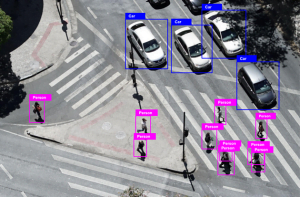types of cyber security:
Everyone’s talking about types of cyber security in the wake of major security breaches at Equifax and other companies, but many people don’t really understand what makes up the field of cyber security. In this guide, we’ll break down the seven types of cyber security threats that you need to know about if you want to keep your data safe. Some of these may surprise you!
7 Types of Cyber Security Threats:
1) Identity Theft
Another common threat is identity theft, where attackers gain access to a person’s social security number, credit card or other identifying information. If an attacker steals your identity, he can wreak havoc on your finances and even damage your credit rating. Keep track of all bank accounts and credit cards you have and limit which ones are available online. Never give out personal information unless you’re 100 percent sure it’s going to a reputable source.
2) Phishing Scams
Phishing scams are a very common form of cyber security threat. Phishing is an attempt to trick you into giving out your personal or financial information by posing as a legitimate company and luring you in with phony email correspondence. These types of scams can be very hard to spot, but most phishing emails ask for money in one way or another.
3) Ransomware
Ransomware is a form of malware designed to block access to a computer system until a sum of money is paid. It’s typically installed through drive-by downloads, browser exploits or infected websites. Once in place, it locks down computers and displays a message informing users that they must pay up before they can use their systems again. The demand is often accompanied by an email address or contact information where users can send payment, but occasionally ransomware will incorporate more sophisticated transaction methods such as Bitcoin and Tor.
4) Malware/Viruses
Malware, or malicious software, refers to any program or code that infects a computer system or network. Viruses and worms (which spread through networks) are examples of malware. The most common types include trojans, viruses, bots and rootkits. They can destroy data, slow down your machine and even steal your identity. Defending against them is critical in today’s cyber security world.
5) Network Attacks
The Internet was not built with security in mind; instead, it was created as a cooperative system that would allow researchers to freely access and share data. Unfortunately, it has become an easy target for hackers seeking to steal information or crash networks. Luckily, there are plenty of steps you can take (such as using WPA2 encryption) so your home network is secure from cyberattacks.
6) Supply Chain Attacks
Some hackers will infiltrate a company’s supply chain, which allows them access to systems they may not be able to breach directly. It’s easy for outsiders (or insiders) to make subtle changes at various steps along a product or service’s journey, right up until it reaches your customer. If you order something online and it never arrives, do you report it as lost? Do you call customer service? What if these places were under someone else’s control?
7) Web Application Attacks

Web application attacks are most often directed at servers and databases, but it’s also possible for attackers to target applications used by employees on computers. Basically, an application attack is any kind of cyber attack that targets a program that runs on your website or server—for example, a web app such as a content management system (CMS), e-commerce platform, or customer relationship management (CRM) software.
The technologist path is more general. It covers more hands-on roles and includes security architecture, as well as designing, selecting and implementing technical controls.
It will depend on the role that the apprentice plays in the company to determine which standard or option is best. It is important to carefully consider the type of tasks that the apprentice will have to do in real life and any additional opportunities to get experience in other areas.









